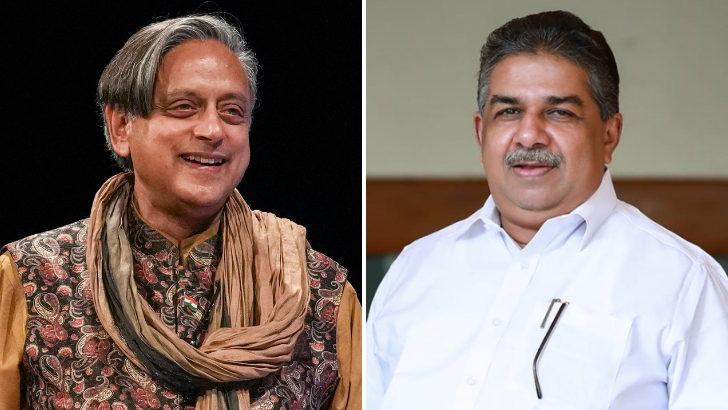What ‘The White Lotus’ gets wrong about the meaning and goals of common Buddhist practices
It depicts a young American woman who is interested in joining a yearlong meditation program at a Buddhist temple, even though Thai temples do not offer such programs.
PTI
-
PHOTO: Wikipedia
WASHINGTON, 28 MARCH
The new season of
“The White Lotus” is set on a luxury resort on the Thai island of Koh Samui.
This comedy-drama series, which critiques wealthy tourists, focuses one
plotline on foreigners who arrive in Thailand with an interest in engaging with
its Buddhist traditions.
It depicts a young
American woman who is interested in joining a yearlong meditation program at a
Buddhist temple, even though Thai temples do not offer such programs. It also
portrays a temple environment with many foreigners staying there long term, not
dressed in typical clothing for residents of a temple – unusual in Thailand –
and inaccurately describes the Buddhist view of the afterlife.
I have studied Buddhism in Thailand for over a decade, including the diverse ways in which Thai Buddhists practice their religion. While the Thai Buddhism depicted in The White Lotus is not completely realistic, there are several authentic ways to engage deeply with Buddhism, ranging from offering donations to short meditation retreats to ordination as a monastic.
Generosity and
Buddhist laity
Without donations,
Buddhist temples and monastic institutions could not exist.
The lay community
provides for monks and temples, in exchange for the spiritual currency of
merit, which is believed to turn into good karma. This good karma is believed
to produce favorable conditions in this life and the next life, such as
attaining wealth or being reborn into a privileged family.
Some laypeople might
give food to monks as they walk on their alms rounds every morning, while
others may visit the temple only on most Buddhist holidays. The main intention
behind interacting with a monk or visiting a temple is to make merit. Each
temple has donation boxes for specific funds it needs, such as paying the
electricity bill, completing renovation projects, providing education for young
monks and funding the monastic community’s health care.
People can take home blessed objects such as a lucky candle or small amulet in exchange for a small donation. In some temples, a monk’s duty is to sit inside one of the main halls and wait until the laity comes to receive offerings and give blessings.
Meditation retreats
Temples with
meditation centers generally offer meditation retreats for a short period of
time. Many offer 10-day retreats; participants can also sign up for a 21-day
program in the north of Thailand, where they will aim to spend their days in
10-15 hours of meditation and minimise any other activity, including sleep.
Participants in the
21-day program aim to reach the first of the four stages of enlightenment
within Thai Theravada Buddhism. Buddhists believe that those who attain the
first stage have “entered the stream” of enlightenment and are guaranteed to
attain it within seven lifetimes.
Contrary to popular
Western beliefs about Buddhist meditation, it is not viewed as a secular
practice. Thai Buddhists believe that meditation is a meritorious activity,
helping them not only to ultimately leave the cycle of rebirth but also to
accumulate merit and good karma along the way – in this life and future ones.
At a meditation centre, every moment is spent in mindfulness of every action, along with periods of formal walking or sitting meditation. All meditation centers have a structured program and schedule that practitioners, typically dressed in white pants and top, must follow individually or in group periods of meditation.
Ordination of men and
women
Ordination is an
important part of the Buddhist life course. Thai Buddhists often enter a
monastery for a short period of time, temporarily being ordained as a monk or
nun. Even for those who intended to enter for life but choose to leave the
monastic life, the process is simple; it usually carries no shame or
disappointment. However, if a monk was well known for his teaching, his
followers would likely feel upset.
In Theravada
Buddhism, the kind of Buddhism practiced in Thailand, there are two levels of
ordination: novice and full “bhikkhu” – the term for a fully ordained male.
Males under the age of 20 may pursue only novice ordination, while those over
20 can become fully ordained monks.
It is often
considered a rite of passage, or at least a sign of discipline and maturity,
for a male to have been ordained at some point in his life. Temporary
ordination is seen as a way for men to make merit for their parents, especially
their mothers, who sacrificed so much for their existence.
Women are generally
not allowed to be ordained in Thai Buddhism, but some have received ordination
in Sri Lanka, where they are allowed to be monks, and set up communities in Thailand,
which are gaining in popularity. These female monastic practice centers have
initiated temporary ordination programs for female monks, or “bhikkhuni.”
These centers host
special programs once or twice a year, where up to 100 women, including international
visitors, can ordain as novice female monks for a short period. During this
time, they learn what it is like to wear the robes, receive offerings and study
the Buddhist texts.
Many women find this
opportunity meaningful because they can offer merit to their parents, which was
previously only available to a male.
Women can also ordain
temporarily or long term as a “mae chi” in Thailand, or a precept nun. They
usually follow Eight Precepts, including celibacy, wearing white robes and
shaving their head. Although more accepted today in Thailand as a role for
Buddhist women than bhikkhuni, this category of ordination was not initiated by
the Buddha. Precept nuns are believed to have existed for centuries, but
without a clear origin.
These are some common ways in which Thai Buddhists practice Buddhism, often with the goal of achieving prosperity in this life and a better rebirth. Such practices, Buddhists believe, may also get them closer to the ultimate aspiration of enlightenment.
Leave a Reply
Your email address will not be published. Required fields are marked *








.jpg)


.png)
.png)
.png)

.png)
.png)
.png)
.png)

